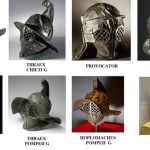In 2011, using only non-invasive methods, an unusual discovery was made in Carnutum (present-day Austria) – the school of gladiators was discovered.
Stretching between the present-day villages of Petronell-Carnuntum and Bad Deutsch-Altenburg, the Roman city of Carnutum (in northeastern Austria) is one of the largest surviving “archaeological parks” in Europe.
Wolfgang Neubauer, director of the “Ludwig Boltzmann Institute for Archaeological Prospection and Virtual Archeology” (LBI ArchPro), has spent the past two decades researching the city with his team using non-invasive methods.
As Neubauer stated, no one has made such discoveries before using GPR and aerial photography. In September 2011, radar discovered a forum, barracks, a series of shops, halls and a large gladiator school complex, which is the most complex structure of this type after its counterparts in Rome and Pompeii. In total, an area of 0,280 hectares was surveyed.
The radar revealed that Ludus Magnus had two levels of collonaded galleries that enclosed a courtyard. The central object of the square was a round structure, which, according to scientists, served as a training room, surrounded by a wooden auditorium, attached to a stone foundation.
It is estimated that there could be 75 gladiators at the school at the same time. The sleeping quarters varied in size; some were large and probably belonged to lanista (owner), instructors or senior gladiators. The smallest and without a window were probably assigned to the most unruly warriors.
In the northern wing of the complex, there was a bathhouse with central heating. There was an open space next to the school where chariot races must have been held.





